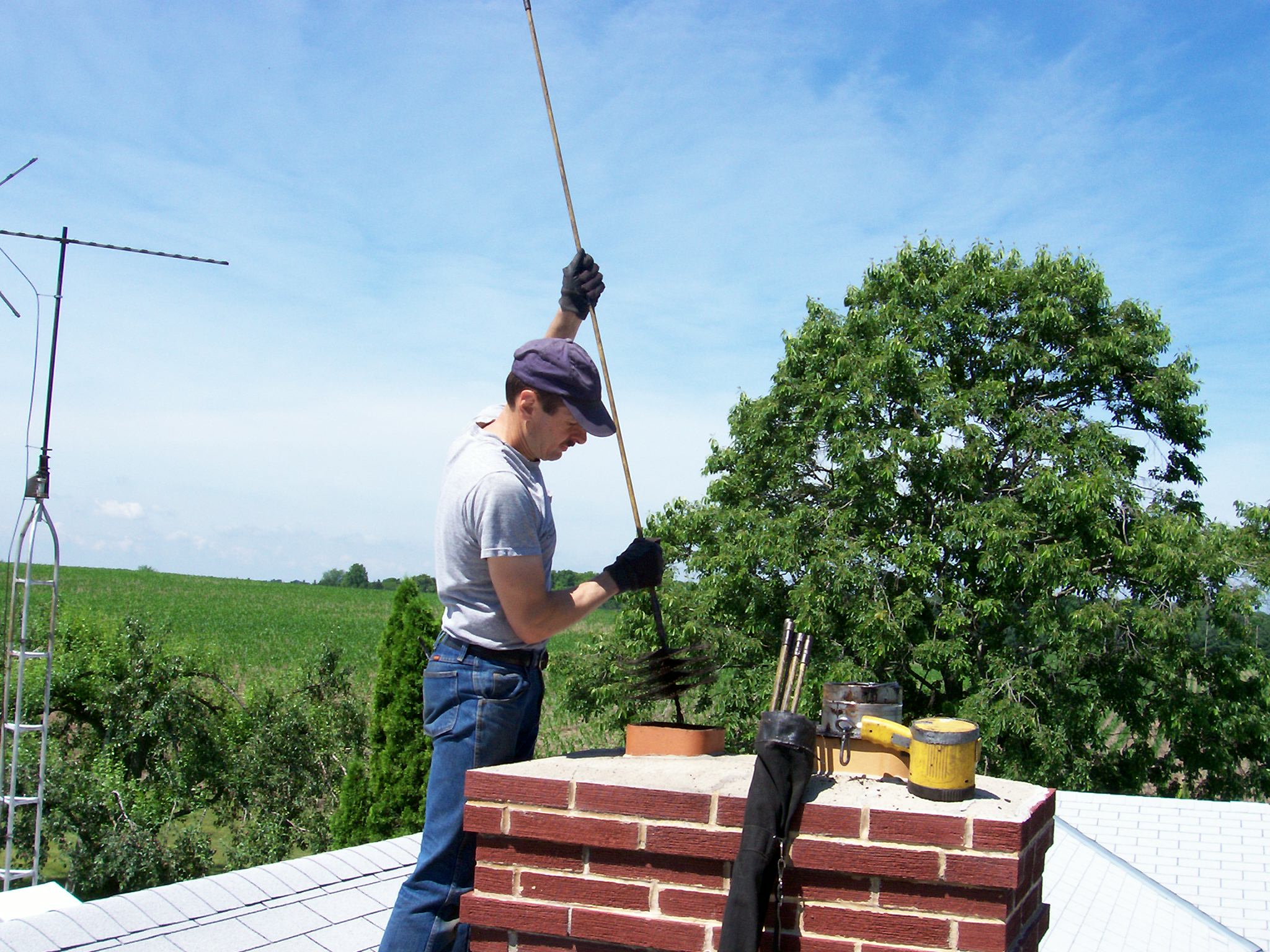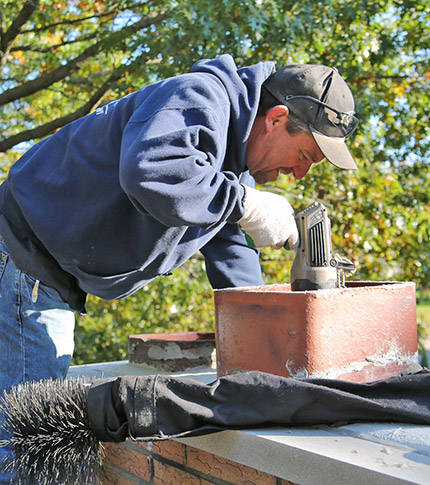Elevate Your Home Comfort: Chimney Clean San Jose Services You Can Count On
Elevate Your Home Comfort: Chimney Clean San Jose Services You Can Count On
Blog Article
Maintaining Your Chimney in Top Forming: The Significance of Regular Cleansing
Maintaining your smokeshaft in leading shape is vital for the security and performance of your home. Routine cleaning is a vital element of chimney maintenance that should not be overlooked. Neglecting chimney cleansing can lead to a selection of problems and risks, such as the build-up of creosote, a highly combustible material.
The Threats of Neglected Smokeshaft Cleansing
Disregarded chimney cleansing can lead to severe hazards and threats to both the structural honesty of the smokeshaft and the safety of those staying in the home. Smokeshafts play a critical function in directing smoke and hazardous gases out of the house, making certain a risk-free and healthy and balanced living atmosphere.
One of the primary risks of disregarded chimney cleansing is the potential for chimney fires. If not eliminated via regular cleaning, it can spark and cause a chimney fire.
In addition to the danger of fires, disregarded chimney cleaning can likewise bring about carbon monoxide gas poisoning. When smokeshafts are obstructed, toxic gases such as carbon monoxide can become trapped inside the home as opposed to being safely eliminated with the chimney. Carbon monoxide gas is odorless and colorless, making it tough to find without correct air flow. Long term direct exposure to carbon monoxide gas can result in major health and wellness problems and even death.
In addition, neglecting smokeshaft cleaning can jeopardize the structural honesty of the chimney. As an outcome, water can seep right into the chimney, triggering further damages and possibly impacting the bordering framework of the home.
Benefits of Regular Chimney Upkeep
Routine smokeshaft upkeep offers several vital advantages for property owners. A tidy chimney lowers the threat of smokeshaft fires, which can trigger comprehensive damage to a home.

Routine smokeshaft upkeep also assists to expand the life expectancy of the smokeshaft. By dealing with any type of concerns or damage beforehand, homeowners can protect against small issues from coming to be significant repairs. This can conserve time and cash over time.
Finally, normal smokeshaft upkeep can aid to preserve the effectiveness of the chimney. A clean smokeshaft permits correct airflow, which improves the performance of the fire place or wood-burning stove. This indicates that homeowners can appreciate a warmer, much more reliable heater during the cooler months.
How Creosote Accumulation Can Impact Your Smokeshaft
Creosote accumulation considerably impacts the efficiency and safety and security of your chimney. As the smoke rises through the smokeshaft, it cools down and condenses, leaving behind a deposit on the smokeshaft wall surfaces.
One of the main methods creosote impacts your smokeshaft is by lowering its performance. As creosote develops, it narrows the flue, limiting the flow of smoke and gases out of your home. This can bring about bad ventilation, creating smoke to support into your space and boosting the risk of carbon monoxide gas poisoning.

Routine cleaning is important to prevent creosote build-up and maintain the security and effectiveness of your smokeshaft. By organizing professional smokeshaft evaluations and cleanings at least once a year, you can make sure that any creosote is removed before it comes to be a hazard. Furthermore, making use of well-seasoned wood, burning small, hot fires, and preventing too much air restriction can aid minimize creosote formation.
Preventing Smokeshaft Discharges With Routine Cleansing
Positive upkeep is vital in guarding your chimney against the terrible repercussions of fire. One of the most effective methods to prevent chimney fires is via routine cleansing.

By organizing normal chimney cleansings, you can guarantee that any kind of creosote accumulation is gotten rid of before it ends up being a fire risk - Chimney Clean San Jose. Specialist chimney sweeper have the expertise and see page specialized tools to thoroughly clean your smokeshaft, removing the creosote and stopping fires
It is advised to have your chimney cleaned a minimum of yearly, or more often if you utilize your fire place or wood-burning cooktop frequently. Furthermore, routine examinations can identify any potential problems or damages that might increase the risk of a chimney fire.
Making Sure the Safety And Security of Your Home With Regular Chimney Evaluations
To make certain the safety and security of your home, it is essential to on a regular basis inspect your chimney. Chimney examinations play an essential function in recognizing potential risks and resolving them promptly. Over time, chimneys can establish splits, blockages, or other architectural problems that might endanger their functionality and present a threat to your home's security.
Normal smokeshaft inspections can help find and prevent chimney fires, carbon monoxide leaks, and various other unsafe scenarios. A comprehensive assessment entails analyzing the problem of the smokeshaft lining, looking for creosote accumulation, taking a look at the chimney cap and crown, and checking the exterior of the chimney for any kind of signs of damage.
By carrying out regular smokeshaft inspections, you can identify and deal with any type of problems prior to they rise right into major problems. Timely repair work or maintenance can help protect against expensive damages to your chimney and ensure that it proceeds to run securely and effectively.
It is my website suggested to employ an expert smokeshaft examiner for detailed and exact evaluations. These experts have the knowledge, experience, and specialized devices to perform thorough evaluations and offer ideal suggestions for repair work or upkeep.
Final Thought
To conclude, routine cleaning and upkeep of your smokeshaft are essential for guaranteeing its safety and protecting against prospective dangers. Disregarded chimney cleansing can bring about the build-up of creosote, which can create chimney fires. Chimney Clean San Jose. By scheduling regular cleaning and inspections, you can minimize the dangers connected with an inadequately preserved smokeshaft and safeguard your home
Ignored smokeshaft cleansing can lead to severe threats and risks to both the structural stability of the smokeshaft and the safety and security of those staying in the home. When smokeshafts are clogged, toxic gases such as carbon monoxide can become trapped inside the home instead of being safely removed with the chimney.Additionally, ignoring smokeshaft cleansing can jeopardize the architectural stability of the chimney.Finally, routine chimney maintenance can help to maintain the efficiency of the smokeshaft. As the smoke climbs through the smokeshaft, it cools down and condenses, leaving behind a deposit on the smokeshaft wall surfaces.
Report this page